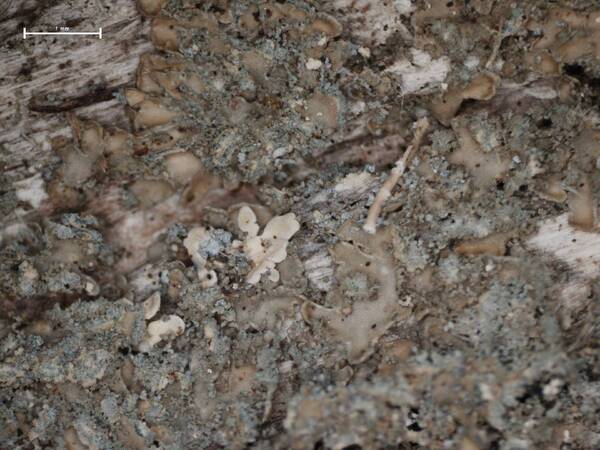Parmeliella parvula P.M. Jørg.
Skr. Norske Vidensk.-Akad., Mat.-Naturv. Kl., N.S., 36: 19, 1977.
Synonyms: Parmeliella jamesii Ahlner & P.M. Jørg.
Distribution: C - Tosc.
Description: Thallus squamulose, blue-grey, rarely with a brownish tinge, consisting of 1-2 mm wide, 100-150 µm thick, finally sometimes weakly elongate, concave to flat squamules with well-delimited but often interrupted, marginal soralia bearing pale blue-grey, finely to coarsely granular soredia which sometimes entirely cover the central parts of thallus. Upper cortex paraplectenchymatous, 30-40 µm thick; medulla white; lower cortex absent. Apothecia very rare, biatorine, 0.3-0.6 mm across, with a flat to finally convex, red-brown disc which tends to turn blackish with age and a persistent to finally exccluded, paler proper margin. Epithecium brownish; hymenium colourless to yellowish brown, I+ persistently deep blue; paraphyses simple, not or only slightly thickened at apices; hypothecium colourless. Asci 8-spored, subcylindrical to clavate, with a I+ blue tholus and an internal, more intensely I+ blue tubular structure. Ascospores 1-celled, hyaline, ellipsoid, 15-18 x 10-12 µm, with a thin, finely warted epispore. Photobiont cyanobacterial (Nostoc the cells in clusters). Spot tests: thallus and medulla K-, C-, KC-, P-, UV-. Chemistry: without lichen substances.Note: a mild-temperate to oceanic-boreal lichen, mainly corticolous on ancient trees in open, but very humid forests, but also found on silicicolous bryophytes. It is included in the Italian red list of epiphytic lichens as “Critically Endangered” (Nascimbene & al. 2013c).
Growth form: Squamulose
Substrata: bark
Photobiont: cyanobacteria, filamentous (e.g. Nostoc, Scytonema)
Reproductive strategy: mainly sexual
Restricted to humid-warm, oceanic areas
Commonnes-rarity: (info)
Alpine belt: absent
Subalpine belt: absent
Oromediterranean belt: absent
Montane belt: absent
Submediterranean belt: absent
Padanian area: absent
Humid submediterranean belt: extremely rare
Humid mediterranean belt: extremely rare
Dry mediterranean belt: absent
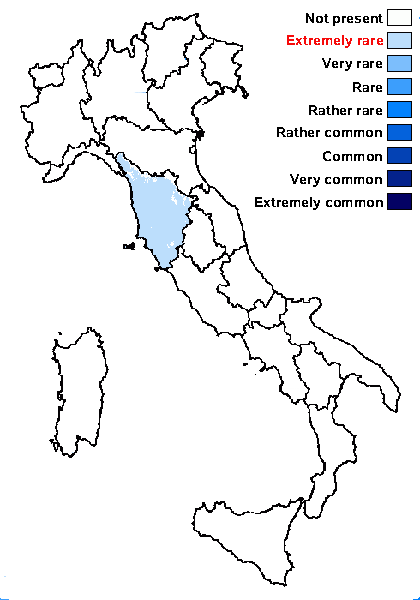
Predictive model
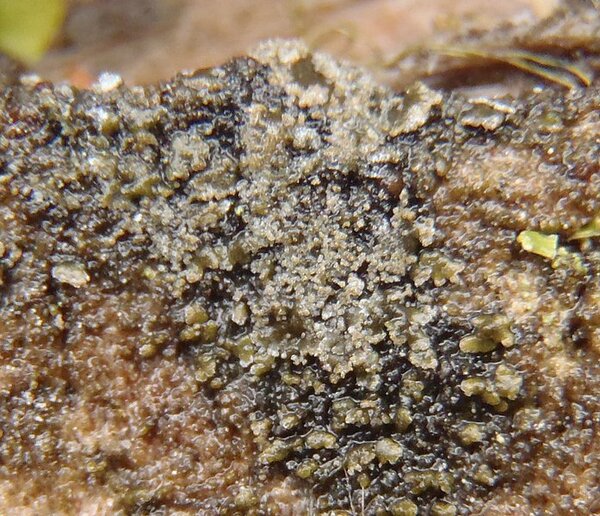
Curtis Bjork - CC BY SA 4.0
Canada, British Columbia, British Columbia, Clearwater Valley, Dawson Falls
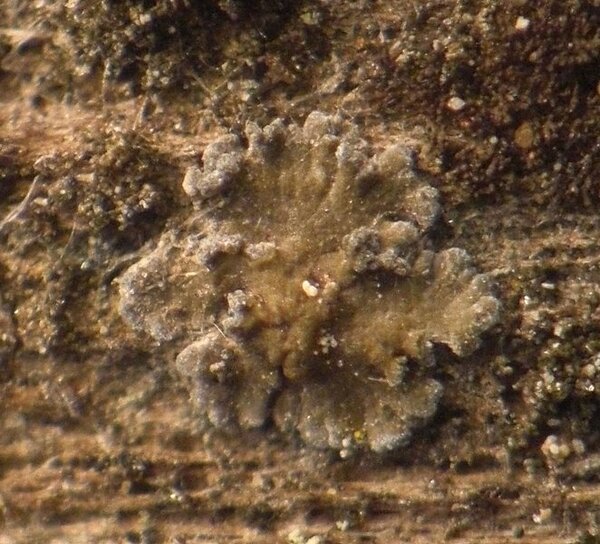

Curtis Randall Björk – CC BY-SA 4.0
British Columbia, Clearwater Valley, Dawson Falls Date: 2012-04-08 On wood of Thuja log suspended over river shore, in waterfall sprayzone
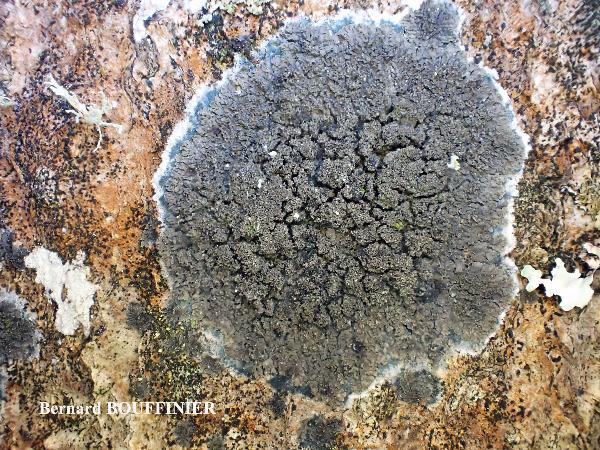
Bernard Bouffinier - Source: http://www.lichensmaritimes.org/index.php?task=fiche&lichen=1324&lang=en
France, Pyrénées Cauterets
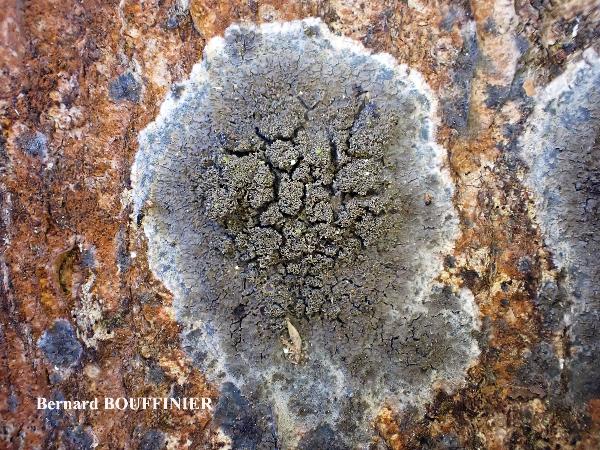
Bernard Bouffinier - Source: http://www.lichensmaritimes.org/index.php?task=fiche&lichen=1324&lang=en
France, Pyrénées Cauterets
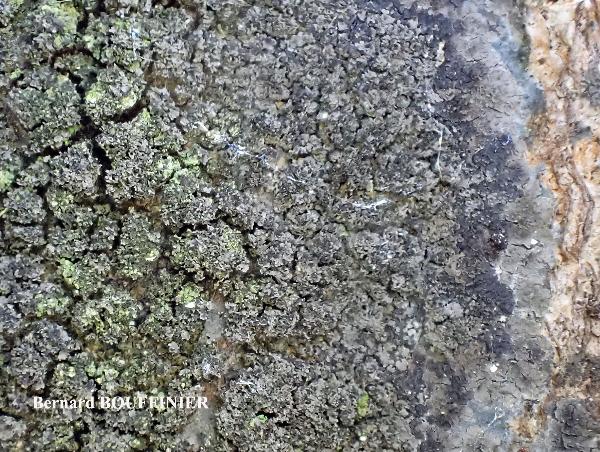
Bernard Bouffinier - Source: http://www.lichensmaritimes.org/index.php?task=fiche&lichen=1324&lang=en
France, Pyrénées Cauterets

Bernard Bouffinier - Source: http://www.lichensmaritimes.org/index.php?task=fiche&lichen=1324&lang=en
France, Pyrénées Cauterets
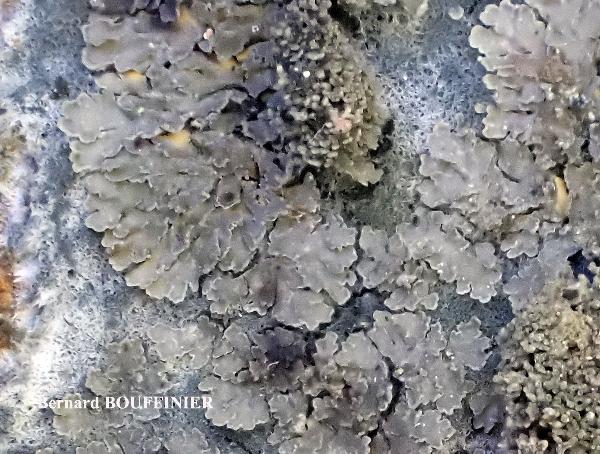
Bernard Bouffinier - Source: http://www.lichensmaritimes.org/index.php?task=fiche&lichen=1324&lang=en
France, Pyrénées Cauterets
Growth form: Squamulose
Substrata: bark
Photobiont: cyanobacteria, filamentous (e.g. Nostoc, Scytonema)
Reproductive strategy: mainly sexual
Restricted to humid-warm, oceanic areas
Commonnes-rarity: (info)
Alpine belt: absent
Subalpine belt: absent
Oromediterranean belt: absent
Montane belt: absent
Submediterranean belt: absent
Padanian area: absent
Humid submediterranean belt: extremely rare
Humid mediterranean belt: extremely rare
Dry mediterranean belt: absent

Predictive model

Curtis Bjork - CC BY SA 4.0
Canada, British Columbia, British Columbia, Clearwater Valley, Dawson Falls


Curtis Randall Björk – CC BY-SA 4.0
British Columbia, Clearwater Valley, Dawson Falls Date: 2012-04-08 On wood of Thuja log suspended over river shore, in waterfall sprayzone

Bernard Bouffinier - Source: http://www.lichensmaritimes.org/index.php?task=fiche&lichen=1324&lang=en
France, Pyrénées Cauterets

Bernard Bouffinier - Source: http://www.lichensmaritimes.org/index.php?task=fiche&lichen=1324&lang=en
France, Pyrénées Cauterets

Bernard Bouffinier - Source: http://www.lichensmaritimes.org/index.php?task=fiche&lichen=1324&lang=en
France, Pyrénées Cauterets

Bernard Bouffinier - Source: http://www.lichensmaritimes.org/index.php?task=fiche&lichen=1324&lang=en
France, Pyrénées Cauterets

 INDEX FUNGORUM
INDEX FUNGORUM
 GBIF
GBIF
